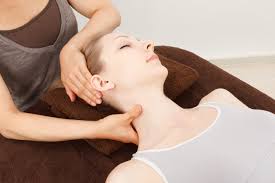How long after chiropractor will I feel better?
Your pain experience is unique to you, so your relief time is individual as well. However, published clinical outcomes can give you an idea of what to expect with Groton chiropractic care.
General Healing Time
Bones heal rather quickly if they have a good blood supply: 5-6 weeks.
Ligament and tendons take a bit longer: 6-8 weeks.
Discs and cartilage take the longest: 3 months or more.
If you have a mixture of these factors, it may take some time. If you smoke, drink alcohol or have a surgical procedure, your mending time may be a bit more time intensive as well.
Disc Healing Time
It takes 3 months to heal a disc before you can expect to go about your activities of daily living like an extended amount of sitting, bending, lifting and twisting. (1) Like a broken arm that quits having pain after a few days in a cast, you still have to wear the cast for many weeks to allow healing. Your back will also stop hurting early on in the treatment care plan, but you will have to give space for your disc to heal for at least 3 months before challenging it with more strenuous activities. “Allowing the disc to heal” chiropractic activities may include simply remembering that you are mending even though you don’t hurt, doing your exercises, avoiding bending/lifting/twisting, not sitting for long periods of time, etc.

The Spine is Your Lifeline
Chiropractors look for what’s wrong in the spinal alignment and fix it, based on the premise that your spine supports your body and becomes the foundation for excellent health. Your spinal cord’s primary job is to communicate between your brain and body. Every spinal nerve has a special job for movement and feeling. These nerves tell your muscles how and when to move. They also carry messages back to the brain about sensations including pain.
When we refer to the nervous system, we’re referring to the central nervous system and the peripheral nervous system. If you were to touch a hot stove, the peripheral nervous system sends pain signals through the central nervous system to your brain. Your brain returns the message to pull your hand away. Both systems are important, yet the central nervous system itself carries everything from movement, sensation, and thought processes from the brain to your body and back again.
This entire system is enclosed within and protected by the vertebrae of the spine. An adult spine contains 24 vertebrae, extending between the skull and the pelvis:
- The seven cervical vertebrae (C1 – C7) create a gentle inward curve at the base of your head.
- The 12 thoracic vertebrae (T1 – T12) move outward at the shoulders and back in toward the lumbar spine.
- The five lumbar vertebrae (L1 – L5) create the gentle arch of the small of your back.

Will You Feel Better Right Away?
This really depends on the individual, but many people do feel better right after their adjustment. If your body has spent a long time out of alignment then being aligned again will feel good, and you might feel more relaxed and flexible afterward as well. Just know the relief you feel may not last, though. It may take a while for your muscles to be trained to hold your joints in proper alignment so don’t be discouraged or think it’s not working if the relief doesn’t last.
Will You Feel Discomfort?
The other side of the instant relief coin is feeling uncomfortable after an adjustment. Your body may not recognize being in alignment for the first time because it has gotten used to less than perfect postures. You might even feel a little achy or sore in your joints. It shouldn’t last longer than a day, but if you’re concerned about it, ask your chiropractor what you might be able to do to relieve the discomfort after your adjustment.
What If You Don’t Feel Anything?
There’s always this option – that you won’t feel any different after an adjustment. This doesn’t mean the adjustment didn’t do anything for you; it’s simply how your body has responded to it. It may take a day or two for you to notice any changes in your body, but it’s really important to stick to your chiropractor’s treatment plan so don’t let this keep you away!

Here are the best things to do after your chiropractic adjustment:
I am often asked, “what should I do after my adjustment?” “Can I go to the gym now?” etc. Giving yourself a little time and space to fully experience the changes in your nervous system is the best strategy. While many people rush right back to work or back to the car or back to a hectic life there are choices we can make. Read the suggestions below in order to get the maximum benefit from your care. Keep in mind there is no magic answer.
For this reason, we really recommend that you pay close attention and follow these steps for the next several days to assist your healing.
TO GET THE MOST OUT OF YOUR ADJUSTMENTS: CLEAR YOUR SCHEDULE.
After an adjustment that re-organizes the nerve system, I highly recommend people don’t do much after. At least for a little while. It’s a common mistake for people to schedule a chiropractor’s adjustment along with a massage session, a reiki session, or some other healing activity. I highly recommend that the first few chiropractic adjustments be done separately from any other healing activity. I would not recommend utilizing any other healing practice on the same day as having a chiropractic adjustment. That way you can really get the benefit and impact on your nervous system, and your body can utilize the forces that were applied without having to integrate another healing art. You can also save money by not going to so many practitioners on the same day or even in the same week. If you are sore or if you are better, it is easier to know what is affecting the changes. If you are doing 2 or 3 or even 4 different modalities in one week, you may be wasting your money when there is a good chance that chiropractic might be able to help you more than you can imagine.
GIVE IT A BREAK
(short break) If you regularly exercise or work out, I recommend scheduling your first few chiropractic adjustments several hours away from your exercise routine. I would not recommend you exercise immediately following a chiropractic adjustment. Try to have at least 2-6 hours break before any heavy workouts in the beginning. That way you get the most out of both activities as well as a better sense of what changes are happening. Going for a walk after having a chiropractic adjustment or other light exercise is welcome.
Get checked again within 24 or 48 hours.
The first couple of visits when seeing a chiropractor are focused on the organizational responsiveness of your spine and nerve system. The chiropractor should be checking and comparing how your body is responding to adjustments. In many ways, a person’s first session, or even first couple of sessions, are test signals to the nerve system. Tracking the body’s responses within the nervous system is part of understanding your care and creating a custom plan designed specifically for you. Adjustments are carefully applied to the nervous system to make changes toward a better structure, better structural positioning, and better neurological behavior to alter a person’s perception of him/herself.
Make sure that your second visit is scheduled within 24 or 48 hours of the first if at all possible. A week later is not recommended or optimal in any way, especially in the beginning. Most people, when doing something new for their health and well being, need an immersion period. If you’re going to change your body with exercise, and you really want to create momentum, going to the gym once a week is not going to do it right? The same principle applies when it comes to changing your spine and nerve system. An immersion period is needed to help you gain momentum. This momentum is crucial to the healing process. Without momentum your body will very quickly return to old patterns and behaviors. If a spinal system is going to rediscover connection, transform its structure, behavior, and perception, and awaken to the capacity to heal from within, momentum is the key.
Healthy changes
Chiropractic is a part of a healthy lifestyle. In order for it to work properly, we must make changes at home and at work to relieve the stressors that cause pressure on our spine and nerves. Change unhealthy behaviors that we know are blocking us from the best health.
You are what you eat.
Eat properly, drink lots of good water, rest well and sleep well. Exercise and stretching can be a part of a healthy lifestyle. (I do not recommend stretching during time of acute pain) While none of these activities can replace an adjustment, they can help you need fewer adjustment and get well faster. Eliminate unhealthy habits from your routine. Seek professional help if you feel any of these are beyond your willpower or abilities.